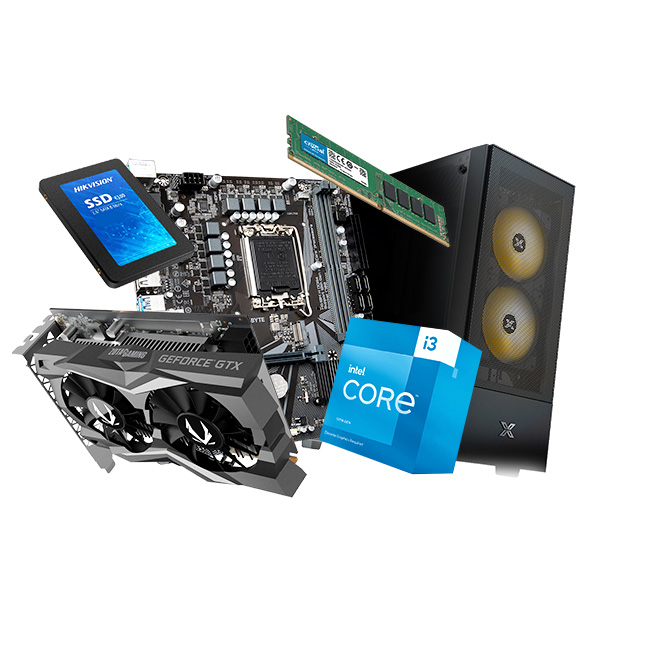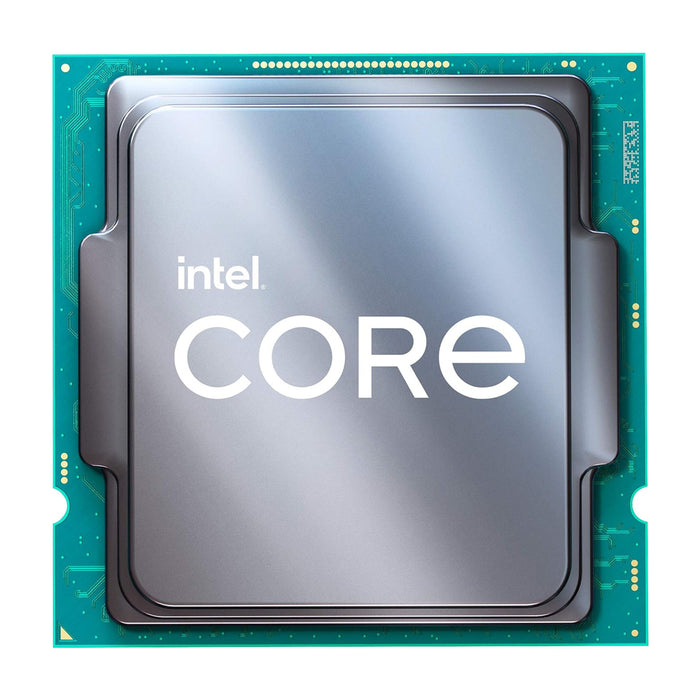The Intel Core i3-13100F is a solid processor for a variety of computing needs, from everyday tasks to light gaming and productivity. While it’s built to deliver impressive performance right out of the box, there are several best practices you can follow to optimize your setup. This guide outlines ways to maximize the efficiency and longevity of your Intel Core i3-13100F processor, focusing on installation, cooling, software configuration, and more.
Proper Installation and Compatibility
Ensuring Compatibility
Before installing your Intel Core i3-13100F, ensure all components are compatible. The processor uses the LGA 1700 socket type, so verify that your motherboard supports it. Check the BIOS version to ensure it supports the i3-13100F. RAM compatibility is equally crucial; DDR4 RAM is supported, and higher frequency modules can offer improved performance. Lastly, make sure your power supply unit (PSU) meets the processor’s power requirements. Confirming compatibility ahead of time prevents installation issues and system instability.
Step-by-Step Installation
Careful installation can prevent damage and ensure optimal performance. Begin by grounding yourself to avoid static discharge that can damage components. Gently place the processor into the LGA 1700 socket, ensuring it aligns perfectly to avoid bent pins. Apply a small, even layer of thermal paste to the CPU’s surface. Attach the cooler securely to ensure good thermal contact. Finally, connect power cables and confirm all components are firmly seated. Proper installation lays a solid foundation for reliable, efficient performance.

Efficient Cooling Solutions
Selecting an Appropriate Cooler
Cooling is essential to maintain the performance and longevity of the Intel Core i3-13100F. While the stock cooler might be adequate for some, consider upgrading to an aftermarket cooler for better thermal management. Options range from advanced air coolers to liquid cooling systems. Liquid coolers typically offer superior performance but can be more complex to install. Select a cooling solution that fits your performance needs and usage patterns. Proper cooling minimizes the risk of thermal throttling and enhances overall system stability.
Enhancing Airflow
Maximizing case airflow is crucial. Arrange fans strategically to create a balanced airflow, with intake fans bringing in cool air and exhaust fans expelling hot air. Keep the interior clean from dust and debris, and arrange cables neatly to minimize airflow obstructions. High-quality fans and proper case design can significantly impact cooling efficiency. Enhanced airflow helps maintain optimal temperatures, prolonging component lifespan and ensuring stable performance under load.
Memory Configuration
Choosing the Right RAM
RAM selection can significantly impact system performance. The i3-13100F supports DDR4 RAM, with higher frequency modules such as 3200MHz or more providing better performance for memory-intensive tasks. For everyday use, 8GB of RAM is sufficient, but consider 16GB or more for multitasking or gaming. The right RAM ensures smooth operation and quick data access, enhancing overall system responsiveness and user experience.
Dual-Channel Configuration
Maximize memory performance by configuring RAM in dual-channel mode. This setup doubles the data transfer rate between the RAM and CPU, improving system efficiency. Install RAM modules in the appropriate motherboard slots as per the manual. Dual-channel mode is beneficial for applications requiring high memory bandwidth and reduces latency. This configuration significantly enhances the performance of tasks like gaming, video editing, and multitasking.

Storage Optimization
SSD vs. HDD
Choosing the right storage solution is vital. Solid-state drives (SSDs) offer faster data access speeds compared to traditional hard disk drives (HDDs). Installing your operating system and frequently used applications on an SSD reduces load times and improves system responsiveness. Use an SSD for primary storage and an HDD for bulk storage needs to balance speed and capacity. This setup provides quick boot times, efficient data access, and ample space for large files.
Implementing NVMe SSDs
For even higher performance, consider NVMe (Non-Volatile Memory Express) SSDs. These drives offer superior read and write speeds compared to SATA SSDs, directly connecting to the motherboard’s M.2 slot. NVMe SSDs reduce latency and increase data transfer rates, enhancing system responsiveness across tasks like gaming, large data transfers, and video editing. NVMe SSDs are an excellent choice for users seeking top-tier performance and improved workflow efficiency.
Software Configuration
Optimizing BIOS Settings
Tuning BIOS settings can further enhance the performance of your Intel Core i3-13100F. Update the BIOS to the latest version for improved compatibility and features. Enable XMP (Extreme Memory Profile) to maximize RAM speed. Adjust power settings to balance performance and power consumption, particularly choosing High Performance mode for intensive tasks. Proper BIOS configuration ensures that components operate at their full potential, optimizing overall system performance.
Operating System Tweaks
Enhance system performance with operating system tweaks. On Windows, disable unnecessary startup programs to speed up boot times and free system resources. Adjust power settings to High Performance mode for maximum efficiency. Keep the OS updated for the latest performance enhancements and security patches. Consider disabling unnecessary visual effects and services to improve responsiveness. These tweaks ensure that your OS operates smoothly, complementing the performance of the Intel Core i3-13100F.

Overclocking the Intel Core i3-13100F
Safe Overclocking Practices
Overclocking can unleash additional performance from the Intel Core i3-13100F. Begin by gradually increasing the processor’s clock speeds in small increments. Monitor system stability and temperatures using tools like CPU-Z and Prime95. Ensure the cooling solution can handle the increased thermal output from overclocking. Safe practices involve monitoring system behavior closely and adjusting parameters gradually. Overclocking can extract extra performance without compromising system stability when done correctly.
Adjusting Voltages
Voltage adjustments might be required for stable overclocking. Increase the core voltage incrementally and test for stability. Excessive voltage can cause overheating, so keep within safe limits. Monitoring temperatures closely is crucial, as higher voltages increase heat output. Careful voltage adjustments ensure stability and performance during overclocking. Properly managed voltages can enhance your system’s performance, making your Intel Core i3-13100F even more robust for demanding tasks.
Regular Maintenance and System Monitoring
Routine Maintenance
Maintaining your system ensures sustained performance. Regularly clean the interior to remove dust and debris, which can obstruct airflow and raise temperatures. Check for firmware updates for all components to maintain compatibility and performance. Periodically reapply thermal paste to the processor to sustain efficient cooling. Routine maintenance keeps your system running at its peak and extends the lifespan of components.
Utilizing Monitoring Tools
Use system monitoring tools to track performance and temperatures. Software like MSI Afterburner, HWMonitor, and HWInfo provide real-time data on CPU usage, temperature, and power consumption. Regular monitoring helps identify potential issues early and ensures your system operates within safe parameters. Proactive monitoring can prevent performance drops and alert you to conditions requiring immediate attention. This approach helps maintain the consistent performance and health of your Intel Core i3-13100F system.
Conclusion
Maximizing Performance
Optimizing your setup for the Intel Core i3-13100F involves several steps, including proper installation, efficient cooling, and smart software configurations. Each element plays a crucial role in ensuring your processor performs at its best. Following these best practices can significantly enhance system efficiency, responsiveness, and overall performance of your Intel Core i3-13100F.
Long-Term Reliability and Enjoyment
Beyond immediate performance gains, these strategies contribute to the long-term reliability of your system. Proper cooling, regular maintenance, and effective monitoring help prevent issues that can degrade performance over time. Investing in high-quality components and adhering to recommended configurations will ensure that your Intel Core i3-13100F-powered system remains robust and reliable for years to come. By implementing these best practices, you can expect a top-tier computing experience with sustained performance and efficiency, enjoying the full potential of your Intel Core i3-13100F for a variety of computing needs.


